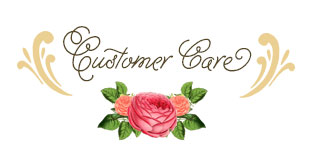Goat Deworming Guide Part 2 & Print-Off
Goat Deworming Guide Part 2 & Print-Off
Dewormers:

Professor of Parasitology
University of Georgia, College of Veterinary Medicine is the source for the following information.
- By using a dewormer from 2 different classes (there are 3 classes of dewormers total), there is a broader spectrum of worms killed resulting in the number left living to be much more diluted in the goats body.
- Additionally, the dewormers you use should remain the same until they are no longer effective to prevent building resistance.
- Dosage: DO NOT under-dose dewormers. In most cases it is better to give too much than not enough.
The following information is very important to know and follow:(11.36 % or 113.6 mg/ml): 20 mg/kg orally; withdrawal time is 7 days for milk Do NOT use in pregnant Does in the first trimester of pregnancy (first 45 days). when using a sheep product in goats, such as Valbazen, most veterinarians recommend doubling the sheep dosage, except for levamisole(Prohibit), which is usually increased by 1.5 times to avoid toxicity.
Valbazen Suspension
Safe-Guard/Panacur Suspension (10% or 100 mg/ml): the label dose in goats is 5 mg/kg, but a 10 mg/kg dosage is recommended. At 10 mg/kg, withdrawal time is 4 days for milk. Add 1 day for each additional day the drug is used (e.g. if administered 2 days in a row then withhold milk for 5 days after 2nd dose). SAFE-GUARD features broad-spectrum activity against internal parasites, which threaten herd health, feed intake and performance. SAFE-GUARD is said to quickly reduce egg shedding and pasture contamination. Safe-Guard is the top recommended dewormer for LUNG WORM.
Ivermectin (Ivomec for Sheep) Used Extra-label Dosage at 24 ml per 100 lbs of goat/sheep. Per Dr. Ray Kaplan, DVM, PhD, University of Georgia: 6 ml per 25 lbs of goat/sheep and 12 ml per 50 lbs of goat/sheep. This is an injectable but is to be given orally to goats. Milk withdrawal is 9 days. Remember: the proper goat dosage is 2 times as much as the sheep dosage for this dewormer.
Prohibit Soluble Drench Powder (Sheep): (Note that this drug is also sold as Levasol and Tramsiol).
How to Mix Prohibit: This solution is prepared by dissolving one 52 gram packet in 1 quart (943 ml) of water. This yields a solution with 49.6 mg/ml. If dosing kids, it is safer to dilute further (1 packet in 2 quarts of water), and then administer twice the amount listed on the chart. The larger volume administered will then provide a wider margin for safety if there are small errors in dosing. I purchase 2 packages of Prohibit, mixing 1 package for adult goats in 1 quart of water and mixing 1 package for kids (less than 1 year old), with 2 quarts water. Then clearly label each jar of Prohibit you have mixed as: Adult or Kids. Also, label with the expiration date in clean closed containers up to 90 days unrefrigerated or 120 days refrigerated (mark expiration date on container and do not use an expired mixture). I use canning jars to mix and store the Prohibit mixture.
NOTE: Be very accurate with your dosage when administering this drug. This de-wormer has the narrowest margin of safety. However, it is one of the most useful anthelmintics. The milk withdrawal is 3 days.
Prohibit (levamisole hydrochloride) is a broad-spectrum anthelmintic and is effective againstthe following nematode infections:
STOMACH WORMS: Haemonchus contortus , Trichostrongylus axei , Teladorsagia circumcincta.
INTESTINAL WORMS: Trichostrongylus colubriformis , Cooperia curticei , Nematodirus spathiger ,
Bunostomum trigonocephalum, Oesophagostomum columbianum , Chabertia ovina.
LUNGWORMS: Dictyocaulus filaria
Note: many report Prohibit is the best dewormer to use for treatment of barber pole worms. The barber pole worm has been called the silent serial killer that runs rampant through goat herds in the spring and fall months. They are blood sucking parasites. They live in the soil and become alive in warmer weather. The barber pole worm is a dangerous blood sucking stomach worm that affects all breeds of goats.
More about Barber Pole Worms:
First of all, you should understand the haemonchus contortus or barber pole worm life cycle.
– Found in the abomasum (Stomach of the Goat).
– 10-30 mm long.
– 5,000 eggs daily are produced by females!
– Life cycle (egg to mature adult) is 17-21 days.
The following is the entire life cycle of Barber Pole Worms step by step:
1. Inside a fecal pellet, there are eggs and larvae present. This is what a fecal test will show as well.
2. The larvae make their way from the pellet into the grass.
3. Larvae becomes suspended in dew or rain droplets.
4. Larvae droplet is ingested as a goat grazes or eats off the ground.
5. Now in the goat’s stomach, the larvae becomes an adult stomach worm.
6. The adult rests, lives and multiplies in the abomasum of goats.
7. Finally, those 5,000 plus eggs are released by the female and extracted out of the goat by way of fecal pellets.
8. And it starts again.
When Barber Pole Worms Are Mostly Present: Barber pole worm infestations in goats occur most frequently in the Spring and Fall months. The worms propagate best in warm, moist soil conditions. They don’t do well in extreme hot, dry or cold conditions.
That being said, understand the following for Barber Pole Worms:
While extreme hot, dry or cold conditions slow down the progress of the larvae tremendously, when winters are unseasonably warm or summers unseasonably cool, problems with barber pole worms can occur. Even though cold Winters are hard on barber pole worms, Haemonchus contortus has adapted to overwinter dormant in the abomasum of goats.
So, even though the weather turns cold, the worms are still there in the stomach of your goats. During this time the larvae do nothing because they are dormant. Then when the doe gives birth, barber pole begins to develop as well. Lactating does are not able to control adult populations of barber pole worms. This creates the problem in many herds because the worms are able to produce more eggs to further contaminate pastures and barn stalls. In fact, the most vulnerable time for a goat to be infested by a high worm load is 30 days before or after kidding. This is true of the other worms which affect goats. Thus, many choose to deworm their does 1-3 days after kidding. Just watch your doe after kidding, for clumped fecal. If you see her poo is clumped, deworm you doe.
As an alternative natural treatment, some have used the following natural treatment for their does: use Land of Havilah Parasite formula (totally natural herbal product) and put it in their water as a preventative every week after kidding for 2 months (and put it in their food the first 3 days after kidding and then once a week for a month).
Personally, I'm just starting to use these formulas this coming 2025 kidding season and will watch the FREE online class included with purchase for: Proper dosage, frequency, administration suggestions, helpful additions, and Frequently Asked Questions.
Purchase Land of Havilah Parasite Formula 16 oz at:
https://landofhavilahfarm.com/
~ Kristie Miller, MH, CA, NES
Land of Havilah Herbals, LLC
This herbal formula, Land of Havilah Parasite Formula, contains herbs that have been traditionally used to address parasites, such as: Stomach worms (including Haemonchus contortus aka barber pole), coccidia (and other protozoa), tapeworm, liver fluke, lungworm, meningeal worm, heartworm.
Note: Land of Havilah customers have also reported success with some bacterial, viral, and fungal issues.
- Formulated by our Certified Master Herbalist
- Tested as a human Dietary Supplement
- Safe for most species*
- No milk/egg/meat withdrawal
- Safe to use during any stage of life (young, pregnant, lactating, senior)
- No evidence of parasite resistance build up – unlike medications/chemical dewormers, herbs contain many active constituents which makes possible parasite resistance extremely unlikely.
- FREE online class included with purchase: Proper dosage, frequency, administration suggestions, helpful additions, and Frequently Asked Questions. Scanning the QR code on the package label will take you to the class.
- Herbs in both these mixes are organic or wildcrafted
- Tested for Identity, herbicides, pesticides, fungicides, harmful microbes, and heavy metals
- No added fillers or excipients
- Proudly made in the U.S.A.

Cydectin Sheep Drench (1 mg/ml): use orally at 0.4 mg/kg orally; for a single dose -milk withdrawal is 8 days. Note that these withdrawal times are only applicable for the sheep oral drench at the dose given here. Higher doses will require a longer withdrawal time.
Morantel tartrate (Rumatel) recommended label dose for goats is 10 mg/kg, orally. There is 0 (zero) withdrawal time for milk in lactating cattle and dairy goats. Because of the large differences in morantel concentration among the various products, it is important to carefully read the label and make sure you are dosing correctly. The dosage on the chart above is for Durvet Rumatel. {With Durvet Rumatel, feed 0.1 lb (45 grams) per 100 lbs. BW; and with Manna Pro feed 1.0 lb per 100 lb. BW}. There is also a highly concentrated form called Rumatel 88, but this is meant for mixing into large volumes of feed (feed 0.1 lb (45 gram) per 2000 lb BW). Note administering 1.5 – 2X this dose may improve efficacy. If an elevated dose is used then withdrawal times would need to be extended.
It is important not to mix the different drugs together as they are not chemically compatible. They should be given separately, but can all be given at the same time, one right after the other. It is always recommended to treat goats selectively given their individual need for treatment based on FAMACHA score, fecal egg count, body condition score, and other health measurements as a guide. This recommendation is even more important when using drugs in combination. If all animals in the herd are treated, resistance to the dewormers will develop rapidly, and if using a combination there will be nothing left to use when this happens.
Additional Note on Cydectin
For a short period, it was recommended to administer Cydectin (moxidectin) by injection. However, new information suggests that the oral route is preferred. NOTE that the cattle pour-on formulation should NOT be administered to goats orally – this is not permissible under extra-label use law. ALWAYS use the sheep oral drench.
Important! Please Read The Following Notice!
All information provided in these articles is based either on personal experience or information provided by others whose treatments and practices have been discussed fully with a vet for accuracy and effectiveness before passing them on to readers. Much of my page content is from Veterinary Colleges and Manuals.
In all cases, it is your personal responsibility to obtain veterinary services and advice before using any of the information provided in these articles. JoAnna Mertz is not a veterinarian. Neither JoAnna Mertz nor applejofarms.com nor any of the contributors to this website will be held responsible for the use of any information contained herein.



Powered by Boutique Store Builder . Web Design by Avalon Rose Design.

